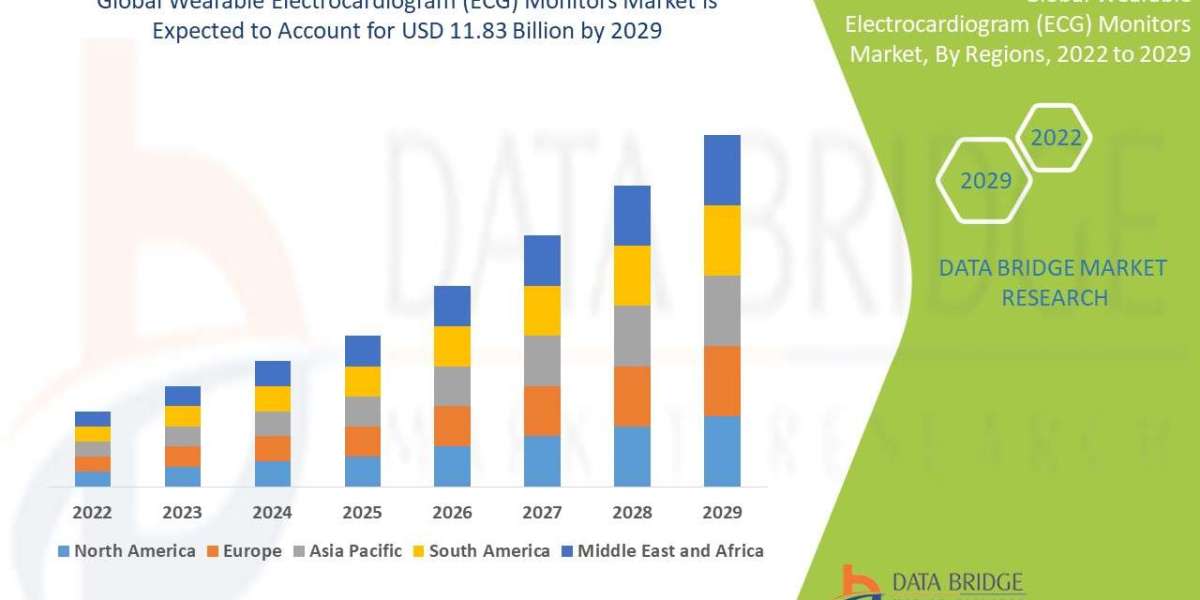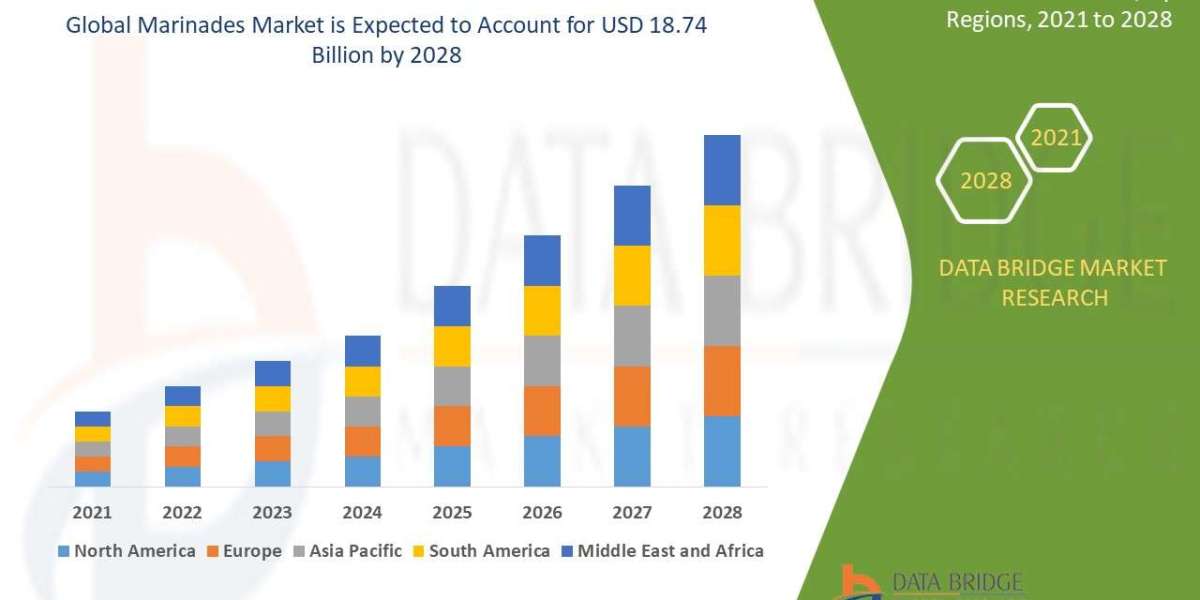Introduction
The Wearable Electrocardiogram (ECG) Monitors Market represents a rapidly advancing segment of the global medical device industry focused on continuous cardiac health monitoring through portable and connected devices. These wearables are designed to track the electrical activity of the heart in real time, detect irregularities, and provide actionable insights for both patients and healthcare professionals.
The increasing global prevalence of cardiovascular diseases (CVDs), rising healthcare costs, and growing demand for remote patient monitoring are driving adoption across healthcare systems and consumer wellness markets. Wearable ECG monitors include patches, wristbands, chest straps, and smartwatches that integrate sensors with AI and cloud-based analytics.
Wearable ECG technologies are revolutionizing cardiac diagnostics, providing comfort, convenience, and continuous data monitoring outside traditional clinical settings. With advancements in biosensor accuracy and wireless connectivity, these devices are becoming indispensable tools for modern healthcare.
Learn how the Wearable Electrocardiogram (ECG) Monitors Market is evolving—insights, trends, and opportunities await. Download report: https://www.databridgemarketresearch.com/reports/global-wearable-ecg-monitors-market
The Evolution
The evolution of wearable ECG monitors has been shaped by the convergence of medical technology, miniaturization, and digital healthcare innovation. Traditional ECG monitoring was confined to hospital-based machines that required complex setups and limited mobility. The development of Holter monitors in the mid-20th century marked the first major step toward portable cardiac tracking, allowing 24-hour monitoring of heart rhythms.
In the early 2000s, technological progress in microelectronics and wireless communication enabled the transition from bulky devices to compact, user-friendly wearables. The introduction of adhesive ECG patches and smartwatch-based sensors allowed continuous, long-term monitoring without interfering with daily activities.
The integration of Bluetooth, Wi-Fi, and cloud connectivity further transformed the market by enabling remote monitoring and data sharing with healthcare providers in real time. AI and machine learning algorithms began to play a crucial role in automating arrhythmia detection and providing predictive analytics for heart health assessment.
Recent innovations include ECG-equipped smartwatches from leading consumer brands and FDA-approved medical-grade wearables that combine functionality with accuracy. The COVID-19 pandemic accelerated the adoption of remote monitoring solutions, cementing wearable ECG monitors as vital tools for telehealth and preventive cardiology.
Market Trends
Rise in Cardiovascular Disease Prevalence
Cardiovascular diseases remain the leading cause of mortality globally, accounting for over 17 million deaths annually. Early detection through wearable ECG monitors is becoming a critical healthcare priority.Shift Toward Preventive and Remote Healthcare
Consumers are increasingly adopting wearable ECG devices for self-monitoring, supported by the expansion of telemedicine and digital health ecosystems.Integration of Artificial Intelligence (AI)
AI algorithms are being embedded into devices to enhance arrhythmia detection, automate diagnostics, and improve real-time data interpretation.Proliferation of Smartwatch-Based ECG Monitors
Smartwatches with ECG functionality are dominating consumer markets, offering single-lead ECG capabilities and easy accessibility for users.Miniaturization and Advanced Sensor Technology
Advances in flexible electronics, biosensors, and low-power chips are enabling the creation of compact and comfortable ECG devices suitable for long-term wear.Rising Adoption in Home Healthcare
The growing elderly population and the preference for at-home medical monitoring are driving demand for wearable ECG solutions.Increased Connectivity and Data Sharing
Cloud-based platforms and mobile health applications are enhancing real-time communication between patients and physicians.Regulatory Approvals and Medical Validation
Companies are focusing on obtaining FDA and CE certifications to ensure product reliability and clinical accuracy.
Challenges
Data Privacy and Security Risks
Continuous transmission of sensitive health data raises concerns about cybersecurity and patient confidentiality.Regulatory Complexity
Varying global regulations for wearable medical devices create barriers to market entry and slow product approval processes.Battery Life and Power Efficiency
Maintaining long battery life while ensuring high sensor accuracy remains a major technological challenge.Limited Clinical Validation for Consumer Devices
Consumer-grade ECG wearables may lack the accuracy of medical-grade equipment, raising reliability concerns among healthcare professionals.Integration Issues with Healthcare Systems
Ensuring seamless interoperability with electronic health records (EHRs) and hospital data systems remains a hurdle.High Cost of Advanced Devices
The initial cost of medical-grade wearable ECG monitors may limit adoption in low-income regions.User Compliance and Device Maintenance
Long-term usage depends on comfort, user engagement, and device durability, particularly for older adults.Technical Limitations
Single-lead devices may not capture complex arrhythmias as effectively as multi-lead ECG systems.
Market Scope
Segmentation by Type
Patch-Based Wearable ECG Monitors
Used for continuous monitoring, often medical-grade, suitable for clinical diagnostics.Smartwatch-Based ECG Monitors
Consumer-oriented devices providing on-demand ECG recordings.Chest Strap Monitors
Commonly used in sports and fitness for heart rate and rhythm monitoring.Portable ECG Monitors
Compact devices used for personal health tracking with high portability.
Segmentation by Application
Atrial Fibrillation Detection
Devices detect irregular heart rhythms for early diagnosis of atrial fibrillation.Cardiac Arrhythmia Monitoring
Continuous monitoring for irregular heartbeats and anomalies.Long-Term Patient Monitoring
Used by healthcare institutions for chronic cardiac condition management.Fitness and Wellness Tracking
Used by consumers for lifestyle and fitness monitoring.
Segmentation by Technology
Bluetooth and Wireless Connectivity
Enables remote monitoring and data transfer to mobile applications.Cloud-Based Analytics
Facilitates real-time data analysis and storage for physicians.AI-Integrated Monitoring Systems
Provides predictive insights and automated diagnostic features.
Regional Analysis
North America
North America leads the market with an estimated USD 1.2 billion share in 2024, driven by high healthcare expenditure, strong digital infrastructure, and presence of leading companies such as Apple, AliveCor, and Fitbit. The U.S. dominates regional growth due to early adoption of telehealth and supportive regulatory frameworks.
Europe
Europe represents a mature market with strong demand in Germany, the UK, and France. Widespread healthcare digitalization and rising awareness of preventive cardiology are driving adoption. The region is also focusing on integrating wearable ECG devices into public health monitoring systems.
Asia-Pacific
Asia-Pacific is projected to grow at the fastest CAGR of over 12% through 2035. China, Japan, and India are key contributors, supported by growing healthcare infrastructure, rising cardiovascular disease rates, and increasing smartphone penetration. Affordable wearable technologies are expanding access across urban and rural populations.
Latin America
The market is growing steadily, led by Brazil and Mexico, as governments invest in digital health initiatives. Increasing affordability and online availability of wearable devices are key trends in the region.
Middle East & Africa
The region is witnessing gradual adoption of wearable ECG monitors with rising healthcare awareness and modernization of medical facilities in the UAE, Saudi Arabia, and South Africa.
End-User Segmentation
Hospitals and Clinics
Use wearable ECG monitors for continuous cardiac monitoring and post-operative care.Home Healthcare
Increasingly popular among elderly patients requiring long-term observation.Sports and Fitness Centers
Utilize wearable ECGs for monitoring athletes’ heart performance.Individual Consumers
Represent a growing segment due to increasing awareness of heart health and accessibility of consumer devices.
Market Size and Factors Driving Growth
Data Bridge Market Research analyses a global wearable electrocardiogram (ECG) monitors market growth in the forecast period 2022-2029. The expected CAGR of global wearable electrocardiogram (ECG) monitors market is tend to be around 23.9% in the mentioned forecast period. The market was valued at USD 2.13 billion in 2021, and it would grow upto USD 11.83 billion by 2029.
Key Factors Driving Growth
Rising Prevalence of Cardiovascular Diseases
Increasing global cases of heart disorders are creating strong demand for real-time ECG monitoring.Aging Population
The growing geriatric population prone to cardiac issues is accelerating market adoption.Technological Advancements
Miniaturized sensors, AI algorithms, and cloud analytics are enhancing the performance and reliability of wearable ECGs.Adoption of Remote Monitoring Solutions
The global shift toward telemedicine post-pandemic has strengthened the wearable ECG market.Integration with Smartphones and IoT Devices
Mobile health ecosystems enable users to track and share heart health data seamlessly.Growing Awareness of Preventive Healthcare
Increasing consumer interest in personal health management is boosting wearable ECG adoption.Government Initiatives and Healthcare Investments
Public and private funding in digital healthcare and chronic disease management programs is supporting market growth.Collaborations Between Tech and Healthcare Firms
Partnerships between technology giants and medical device manufacturers are expanding the reach of wearable ECG technologies globally.
Opportunities in Emerging Regions
Emerging markets in Asia-Pacific, Latin America, and the Middle East offer significant opportunities due to improving healthcare infrastructure and growing smartphone accessibility. Affordable, user-friendly devices tailored for local needs can drive substantial regional expansion.
Conclusion
The Wearable Electrocardiogram (ECG) Monitors Market is entering a period of strong growth and technological maturity. As healthcare systems transition toward personalized, preventive care, wearable ECG devices are playing a vital role in early cardiac risk detection and continuous health monitoring.
The combination of real-time data collection, AI-driven analytics, and mobile integration is transforming the landscape of cardiovascular diagnostics. The market’s steady expansion through 2035 reflects a global emphasis on accessibility, remote healthcare, and consumer wellness.
Innovation, regulatory clarity, and affordable device availability will define the next phase of market development. Companies investing in data security, interoperability, and user experience are expected to gain a competitive advantage. The future outlook remains highly positive, with wearable ECG monitors becoming integral to smart healthcare ecosystems worldwide.
FAQs
1. What is a Wearable ECG Monitor?
A wearable ECG monitor is a portable device that tracks the heart’s electrical activity continuously, helping detect irregular heart rhythms and cardiac abnormalities.
2. What is the market size of the wearable ECG monitors industry?
The global market is valued at USD 3.1 billion in 2024 and is expected to reach USD 9.8 billion by 2035.
3. What is the growth rate of the market?
The market is projected to expand at a CAGR of approximately 10.9% from 2024 to 2035.
4. What factors are driving the market?
Rising cardiovascular diseases, aging populations, technological advancements, and growing use of telemedicine are major growth drivers.
5. Which regions lead the market?
North America dominates, followed by Europe and Asia-Pacific, which shows the fastest growth rate.
6. What are the main challenges?
Data privacy concerns, regulatory hurdles, and high device costs are key challenges.
7. What are the types of wearable ECG monitors available?
Types include patch-based monitors, smartwatch-based devices, chest straps, and portable ECG systems.
8. Who are the major end users?
Hospitals, clinics, home healthcare providers, sports professionals, and individual consumers.
9. How is AI used in wearable ECG monitors?
AI assists in detecting arrhythmias, analyzing heart data, and providing predictive insights for early diagnosis.
10. What is the future outlook for this market?
The future is promising with advancements in AI, remote monitoring technologies, and growing global awareness of cardiac health management.
Browse More Reports:
Global Scaffold Technology Market
Global Scale-Out Network Attached Storage (NAS) Market
Global Scrub Suits Market
Global Secondary Otalgia Market
Global Semi-Autonomous and Autonomous Vehicle Market
Global Sensor Fusion Market
Global Sensor Hub Market
Global Shale Shaker Market
Global Sintered Steel Market
Global Slit Lamp Device Market
Global Smart Education and Learning Market
Global Smart Implantable Pumps Market
Global Smart Medical Devices Market
Global Smart Pneumatic Module Market
Global Smart Retail Market
About Data Bridge Market Research:
An absolute way to forecast what the future holds is to comprehend the trend today!
Data Bridge Market Research set forth itself as an unconventional and neoteric market research and consulting firm with an unparalleled level of resilience and integrated approaches. We are determined to unearth the best market opportunities and foster efficient information for your business to thrive in the market. Data Bridge endeavors to provide appropriate solutions to the complex business challenges and initiates an effortless decision-making process. Data Bridge is an aftermath of sheer wisdom and experience which was formulated and framed in the year 2015 in Pune.
Contact Us:
Data Bridge Market Research
US: +1 614 591 3140
UK: +44 845 154 9652
APAC : +653 1251 975
Email:- corporatesales@databridgemarketresearch.com







